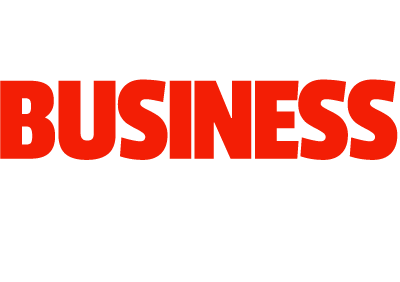How companies get their employees back in the office
Since the first lockdown, the home office and the trend toward “working from anywhere” have become the norm for many employees. Many have set themselves up at home in such a way that they no longer want to go back to the office. Others, on the other hand, want to return to the familiar working environment away from the Corona daily routine. In this article, we provide tips on how HR managers can encourage their employees to return to office work or a mixed form of work.
It feels like half of Germany has been working in a home office since March 2020. Under the German government’s Occupational Health and Safety Ordinance, which has been extended until June 30, 2021, companies are still obliged to offer this to their employees, provided there are no operational reasons for not doing so. Older professionals, especially city dwellers with families, often have fewer problems with working from home than their younger colleagues. After all, they may have just moved to the city after completing their studies or apprenticeship. Their initial salary is usually not enough for a large apartment, so they may have to “hang out” as a couple, both in the home office, on 30 or 40 square meters. For them, the office then beckons all the more again. But how can you motivate everyone to return? What can HR departments do in this regard? How can those willing to return – also in line with Corona measures such as the “federal emergency brake” – be made less afraid of contagion?
To anticipate the last point, there are the following options for companies, together with HR decision-makers and works councils, during the pandemic:
- Limit the number of employees by alternating attendance.
- Strict adherence to AHAL rules (distance, hygiene, everyday masks, ventilation).
- Visiting customers and business trips only if absolutely necessary.
- Free antibody tests for all, at least one, better two per week.
- Company medical COVID-19 vaccinations as soon as and if possible.
- Prioritization of returnees (by readiness, urgency, and risk group).
Trust is good, control is better?
Many companies also have a problem with home office – for all or large parts of the workforce. After the often surprisingly good experiences in the first year of COVID 19, they are no longer so concerned with being able to better control or “drive” their employees – according to the motto “trust is good, control is better.
What employers and their employees often lack, despite the possibilities of video chat in the home office, is genuine teamwork, old and young side by side, also in order to be able to learn from each other and inspire each other. And, as can be seen below, this can also be a decisive motivator to move away from the home office.
What companies, HR and specialist departments can do for employee retention to get home office employees out of the doldrums and keep them in line can be found in various news and blog articles from rexx systems, for example in “Corona crisis – What to do with staff” and “Talent management and home office need not be a contradiction”. This includes virtual all-hands meetings and coffee breaks, as supported by the rexx suite with portal chat and the newly integrated video chat. The talent management software, which is also integrated, also offers a range of tools and options for coaching supervisors, for example, to motivate their workforce in and out of the home office and to keep them together as a team.
Office or Home office is also a question of type?
When it comes to the “drive” back to the office, people are naturally different. There are extroverts who only really blossom in a crowd, while introverts, who are otherwise rather inconspicuous, may only really show what they are capable of in the home office. The positive side of a home office can be the discovery of hidden talents.
In order to explore this and to get the workforce out of their home office frustration, the introduction of moderated, informal all-hands meetings or virtual coffee breaks has proven successful in some companies or teams. HR departments can make the case for making such coffee breaks a permanent part of the weekly schedule.
Lure neighborhood pub or your own gym?
Coffee breaks, my ass. Coffee breaks are so important in the real office because they are the source of a lot of the run-of-the-mill chatter. And many employees, young and old, often find that difficult in the home office. Fittingly, a large social network has just received a lot of attention. The boss recently announced that she would sweeten the move to a new building for around 1,000 employees by setting up a neighborhood pub and her own gym, among other things.
HR departments can also create their own surveys together with employee representatives. These surveys can also be conducted anonymously via employee portals or corresponding HR systems in order to alleviate employees’ concerns that they will suffer disadvantages as a result of their votes or even lose their jobs. The content of such surveys can include the mood among the workforce, the percentage of employees who are willing to return, and their preferences regarding room layout and seating arrangements, as well as attendance times for multi-shift operations.
The we-feeling can be a greater motivator.
To what extent and how the more home-office-inclined can be lured back into the office certainly also depends on age, family situation and one’s own temperament (see extroverts versus introverts). Whether having your own pub or gym will do the trick often depends on these factors as well. Joint yoga sessions, lunches and after-work parties are not necessarily universally popular either and can become as dead after a while as some coffee breaks or all-hands meetings.
Parties are often an age thing, but not only. According to a chanson by Daliah Lavi, some younger people also find them “uncomfortable” to the point of being dull, because they may feel even more excluded. The fact that employees are “comfortable” at home has not usually been confirmed, but many supervisors think so. Accordingly, they have to see how they can get their sheep back into the office. Employee wellness is a big issue today, but how it is received by employees is always a question of type. HR departments can try to influence the selection of offerings and find the right balance to appeal equally to all employees. Basically, however, the desire to leave the home office must be intrinsic. That is, the motivation must come from within.
Of course, superiors can also order this by “Order Mufti,” but it is better to convince them with these offers and with arguments. And it is very important to emphasize the “we” feeling even more than before. Teamwork from the home office may have worked for a while in Corona times, but it cannot be a permanent solution for many companies. Apart from compelling reasons such as customer visits, another argument in favor of being present is that the best ideas often emerge from personal discussions. It is also important to pick up on moods and literally “pick up” everyone.
But instead of trying to convince everyone with a corresponding circular email, the specialist and HR departments should make an effort to communicate in individual discussions how important the employees are for the company and the team and how important it is to work more side by side again and not in parallel. A good start would be to work on expectation management, for example to prepare employees for their return via a hotline. Wellness offers do the rest, but should also be chosen in the context of strengthening togetherness and the sense of community. Otherwise, the only option is the “Order Mufti,” period.
However, one should first start in small steps with a few, instead of immediately with all employees. After all, Corona can also be an opportunity to make a completely fresh start in the office and capture all employees much more than before.
Finally, here’s a little checklist of what companies, supervisors and HR departments can do to help employees get back to normal in the office:
- Maintain communication to keep the workforce up to date, motivate and strengthen trust in the Corona protection measures (see above) and perhaps in a new corporate culture, as described in point 4. This also includes 1:1 return conversations, via rexx systems’ audio or video chat portals, for example. In terms of expectation management and to avoid disappointment afterwards, HR can also set up a hotline.
- Start in small steps: Instead of “rounding up” all employees, whether they want to or not, it would make more sense to start with those who are already upside down at home, in addition to the indispensable core management.
- Plan and test return: As long as the strict rules of distance apply, the return for individuals, whether in rotation or permanently, wants to be well planned, tested and prepared. This includes shaking up the table and seating arrangements here and there. To avoid creating discord, employees should be involved in the new office planning. Planning can also include company outings, Christmas parties and other events that many employees would certainly look forward to once the crisis is over.
- Strengthen team spirit and capture emotions: This is actually part of communication as well, but it is quite important to invite employees who may have settled into the home office as a permanent solution to be more present again.
- Finding new appreciation: The crisis has often shown how valuable each individual is to the company or team. However, supervisors may not have shown it before and should treat their employees who find their way back to the office from the home office with new respect instead of ignoring them as they did in the past.
- See the crisis as an opportunity to seek a fresh start with hybrid presence, as many companies are planning, and agile management with employees.
- Support for managers and employees: Just like Corona and home office, the return to work also presents many employees and their managers with new challenges. In order to master these and to achieve a successful new beginning for all sides, HR departments can play a very decisive role with consulting, management coaching and training offers. As already mentioned, the rexx suite offers a range of support and tools in the area of talent management software, such as for skills management and employee appraisals. And these are so important for employee retention, especially in and after Corona.
You can find more information on enterprise management here.
AKTUELLE STORIES AUS DIGITAL BUSINESS & FUTURE
[plista]



